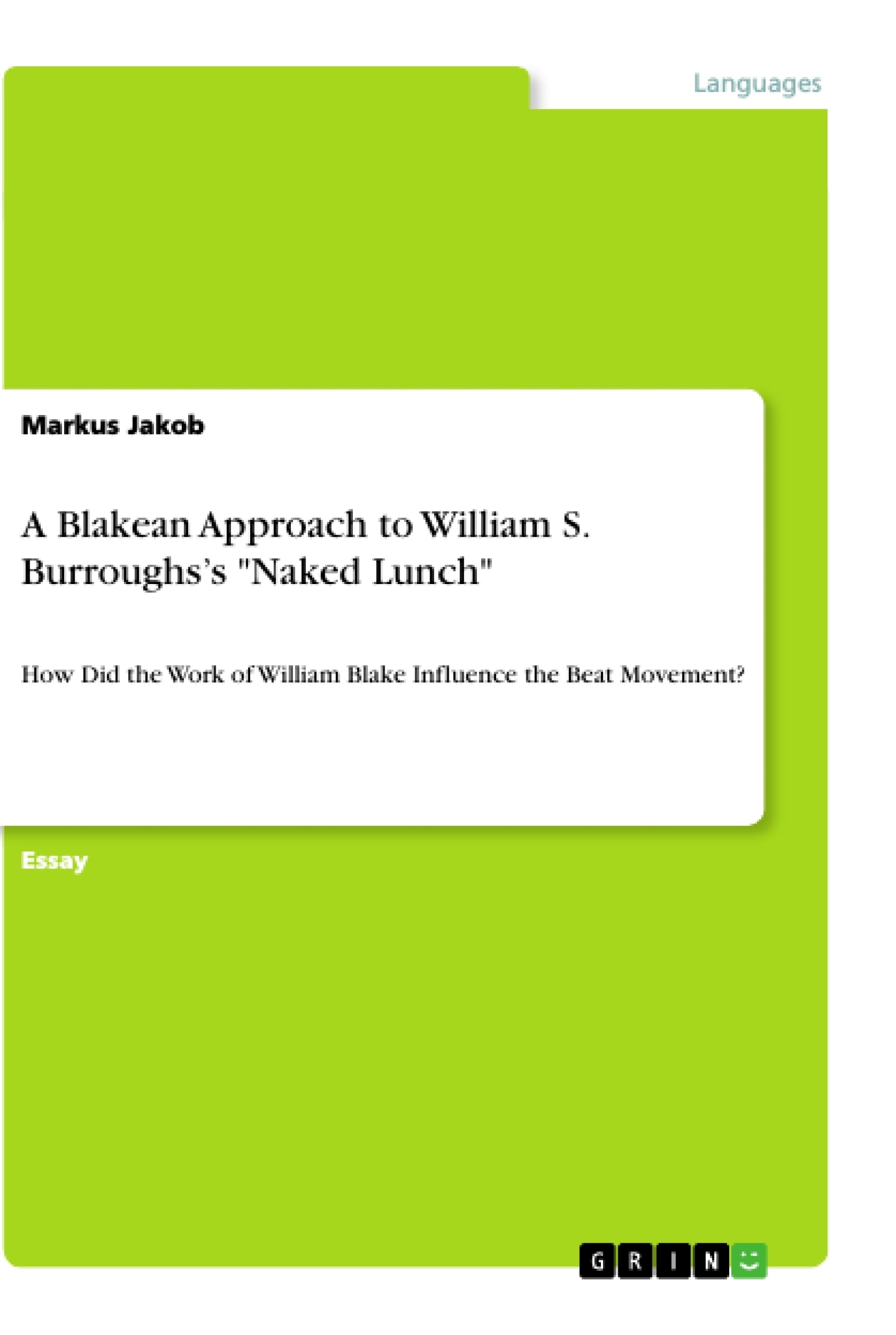This term paper investigates Blakean elements in William S.Burrough’s work "Naked Lunch" and Blake’s influence on the 1950s Beat Movement in the USA.
One of the Beat movement’s main themes is the expansion of human experience and perception. Literature intends to show its recipients, which are considered corrupted by established, commercial media, a considerably liberal attitude.
The Beat movement origins in the USA of the 1950s, a period which was shaped by the expansion of military capacities, isolationism, mass media, post-war circumstances and the threats of the Cold War. Those factors resulted in an emotional state of anxiety, depression and paranoia. In the course of the decade authors intended to constitute a movement against those contemporary circumstances. Thereby, the desire for social, political, sexual and spiritual freedom found expression through unconventional art forms which were considered shocking or even obscene among the American bourgeoise.
For that purpose, the characteristics of the Beat movement will be outlined at the beginning. Subsequently, the author presents a brief insight into Blake’s concept of politics, religion and freedom.
Finally, it will be demonstrated how Blakean ideas contribute to Burroughs’ novel. Thereby, the focus lies on spirituality, repression and sexuality.
Table of Contents
- Introduction
- The Beat Movement
- William Blake: A Brief Discourse
- Observations on Naked Lunch
- Spirituality
- Repression
- Sexuality
- Conclusion
Objectives and Key Themes
This paper aims to examine the influence of William Blake's ideas on William S. Burroughs's novel, Naked Lunch. The paper will analyze how Blake's concept of visionary experience and spiritual liberation contributes to Burroughs's portrayal of drug use, societal repression, and sexual liberation in the novel.
- The impact of the Beat movement on artistic expression and social critique
- Blake's concept of the infinite human nature and its conflict with established authority
- The role of spirituality and transcendence in Burroughs's portrayal of drug use
- The influence of Blake's concept of "contraries" on Burroughs's exploration of sexuality and social taboos
- The use of visionary and surreal elements in both Blake's and Burroughs's works
Chapter Summaries
The introductory chapter establishes the context of Burroughs's Naked Lunch within the Beat movement, highlighting the desire for social, political, and spiritual freedom. The second chapter delves into William Blake's ideas of individual freedom and his critiques of established authority in both politics and religion. Blake's concept of "contraries" and his own mythology, as presented in The Marriage of Heaven and Hell, are explored as crucial elements for understanding Burroughs's approach.
The final chapter analyzes the parallels between Blake's and Burroughs's works, focusing on the themes of spirituality, repression, and sexuality in Naked Lunch. The paper demonstrates how Blake's concept of visionary experience and spiritual liberation contribute to Burroughs's exploration of these themes.
Keywords
The key themes of this paper are William S. Burroughs, Naked Lunch, the Beat movement, William Blake, visionary experience, spirituality, repression, sexuality, and social liberation. The paper explores the relationship between Blake's ideas and Burroughs's artistic approach, analyzing how Blake's concepts contribute to Burroughs's novel.
- Quote paper
- Markus Jakob (Author), 2017, A Blakean Approach to William S. Burroughs’s "Naked Lunch", Munich, GRIN Verlag, https://www.grin.com/document/450707




